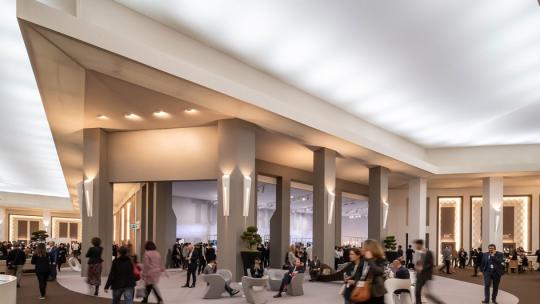![[SEO] horlogerie de luxe](/sites/supdeluxe.com/files/styles/img_style_19_7_480/public/images/amin-hasani-uDSMTV06s4U-unsplash.jpg?itok=lAQMqTCJ)
The challenges of digitalisation for luxury watchmaking
Post-COVID progress in the luxury watch industry
The future of fine watchmaking lies in technology and innovation
The luxury watch industry is emerging from the COVID-19 pandemic with a heightened awareness of the need to integrate technology and innovation to remain relevant. The rapid evolution of post-COVID technology has had a significant impact on luxury watchmaking, redefining consumer expectations and industry standards.
The impact of technology on watch design
Traditional haute horlogerie workshops, such as those of Patek Philippe and Audemars Piguet, are now embracing technology in the design process. 3D modelling software and advanced simulation allow watchmakers to virtually visualise every detail of a watch before it even takes physical shape. This speeds up the creation process while ensuring absolute precision in the design.
A revolution in materials and mechanisms
Innovation is not limited to design. Advanced materials, such as high-tech ceramics and special metal alloys, are now commonplace in the manufacture of cases and bracelets. Richard Mille, for example, is at the forefront of the use of these materials, giving its watches exceptional durability without compromising on luxury.
Connectivity and smartwatches
The emergence of smartwatches has created an interesting convergence between fine watchmaking and modern technology. Brands such as Tag Heuer and Hublot have introduced collections of connected watches that combine traditional craftsmanship with smart functionality, allowing users to track their health and performance more than ever before, while benefiting from the prestige associated with these renowned brands.
Immersive customer experience
The future of fine watchmaking lies not only in the products themselves, but also in the experience offered to customers. Watchmakers are investing heavily in sophisticated virtual boutiques and virtual reality (VR) experiences. For example, Jaeger-LeCoultre offers virtual tours of its workshops, allowing watch enthusiasts to immerse themselves in the art of watchmaking from the comfort of their own homes.
This fusion of technology and innovation with the established tradition of fine watchmaking marks a crucial turning point in the industry, offering consumers creations that combine the timeless charm of the past with the modern functionality of the present. As these trends develop, the future of fine watchmaking looks fascinating, with endless possibilities for luxury watchmakers to write new chapters in their history.
Factors influencing the dynamism of luxury watchmaking
Watch customisation
A striking example of this trend is Swiss watchmaker Audemars Piguet, which has introduced online tools that allow customers to uniquely personalise their watches, from the case to the strap.
E-commerce integration
The rise of e-commerce has also affected the industry. The Patek Philippe brand has taken advantage of this trend by developing an exclusive online sales platform, offering customers the opportunity to acquire their prestigious creations with unprecedented ease.
Immersive customer experience
Luxury brands are investing in exceptional customer experiences. Vacheron Constantin, for example, has created interactive applications that allow customers to virtually discover the complex mechanisms of their watches, offering an immersive experience even from a distance.
Digital challenges in luxury watchmaking
Online counterfeiting
The digital world has opened the door to new challenges, and online counterfeiting is a key example. Companies such as Rolex have had to step up their efforts to combat the sale of counterfeits on the Internet, using advanced technologies to guarantee the authenticity of their products.
Online brand image management
Brand image management is becoming more complex with the proliferation of online platforms. Cartier has faced challenges in managing its digital reputation, implementing constant monitoring strategies and actively engaging with its online community.
Integrating new technologies
The rapid adoption of new technologies, such as connected watches, poses a major challenge to the luxury watch industry. Hublot has risen to this challenge by creating a range of high-end connected watches, fusing traditional luxury with modern functionality.
Examples of luxury watch brands with effective digital strategies
IWC Schaffhausen
This Swiss brand has succeeded in marrying traditional craftsmanship with digital technology by launching an immersive application that allows customers to discover the history of each watch and its manufacturing process.
Omega
By capitalising on the power of social networks, Omega has created a powerful digital strategy by collaborating with influencers and sharing exclusive content, strengthening its online presence.
Jaeger-LeCoultre
This brand has invested in augmented reality to offer customers a unique experience. Through an augmented reality application, customers can virtually try on watches on their wrists before making a purchase.
The luxury watch industry is facing digital challenges that require intelligent adaptation. The brands that succeed in integrating new technologies while preserving the essence of traditional luxury will be the ones to thrive in this constantly changing environment. To further explore recent trends and innovations in luxury watchmaking, Sup de Luxe's Online MBA in Luxury & Digital offers in-depth training. The industry continues to evolve, skilfully combining tradition and innovation to offer unique experiences to a demanding clientele.

